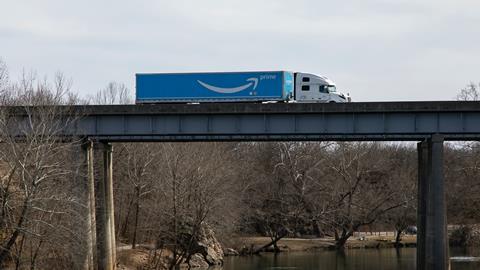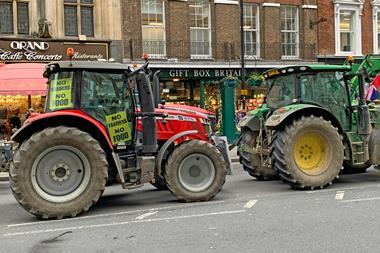Given the amount of Amazon packaging stacking up in homes across the country, and the countless delivery trucks on our roads, it will surprise many to learn that e-commerce has a far lower end-to-end environmental impact than physical retail.
That’s according to a new report from management consultancy Oliver Wyman, which found bricks-and-mortar shopping generates more than double the emissions (measured in units of carbon dioxide equivalent, or CO2e) of shopping online.
The difference is particularly stark in the UK, given that online shopping is hugely popular here. Vans tend to deliver to more people in a smaller area on their route, driving further efficiencies.
Why is a trip to the shops worse than a click? There are two main drivers. First, the energy shops use – think lighting, air conditioning and heating – which dwarfs that used by distribution centres (even when considering ’dark stores’ aren’t literally dark). Then there are the emissions generated by many people all driving separate cars to a shop, versus one van driver delivering to many people.
The analysis – commissioned by Amazon but completely independent, according to Oliver Wyman – only investigated non-food. But the same principles would apply to fresh produce, albeit with some added costs of van refrigeration in the mix.
The report has answers for all the common concerns around online shopping. All that packaging? Boxes from an online order create around 114g of CO2e – about the same as the energy used by the IT system in a store purchase.
And the vans? That seems a valid point, given that van traffic has almost doubled in the past 25 years, according to the Department of Transport. Urban last-mile delivery emissions are on track to increase by over 30% by 2030 in the top 100 cities globally, according to the World Economic Forum, leading to more congestion and longer journeys.
But think about it. As the Oliver Wyman report highlights: e-commerce deliveries to consumers generate 0.5% of total traffic in urban areas, physical retail generates 11%. Driving in separate cars is worse than one van making multiple deliveries. On balance, e-commerce saves four to nine times the traffic it generates.
It’s convincing stuff, which supports similar work from others. But there are limitations.
Comparing online shopping with physical retail only works if based on the assumption people only do one or the other. But consumers don’t operate like that. A regular Ocado user still pops into a supermarket or convenience store from time to time. Many of those queueing for Primark this week will buy clothes online as well as getting them in store.
And indeed, much of the capacity building we’ve seen from the big four in online grocery has relied on the picking happening at their superstores. Retailers aren’t closing stores because online is booming: estates are being leveraged or expanded.
Comparisons are interesting but not entirely helpful. Sure, Amazon has some nice stats to recall in its defence against a looming online sales tax. But in totality, it figures that online shopping has caused an overall net increase in vehicles, packaging and emissions compared with a purely bricks-and-mortar model. Because even the biggest online shopping advocates still enjoy a walk round the aisles.




















No comments yet